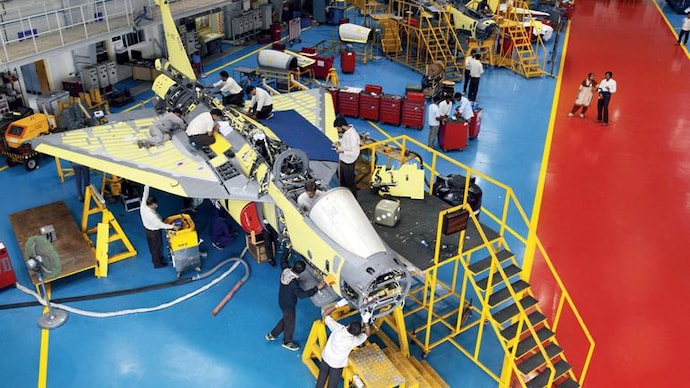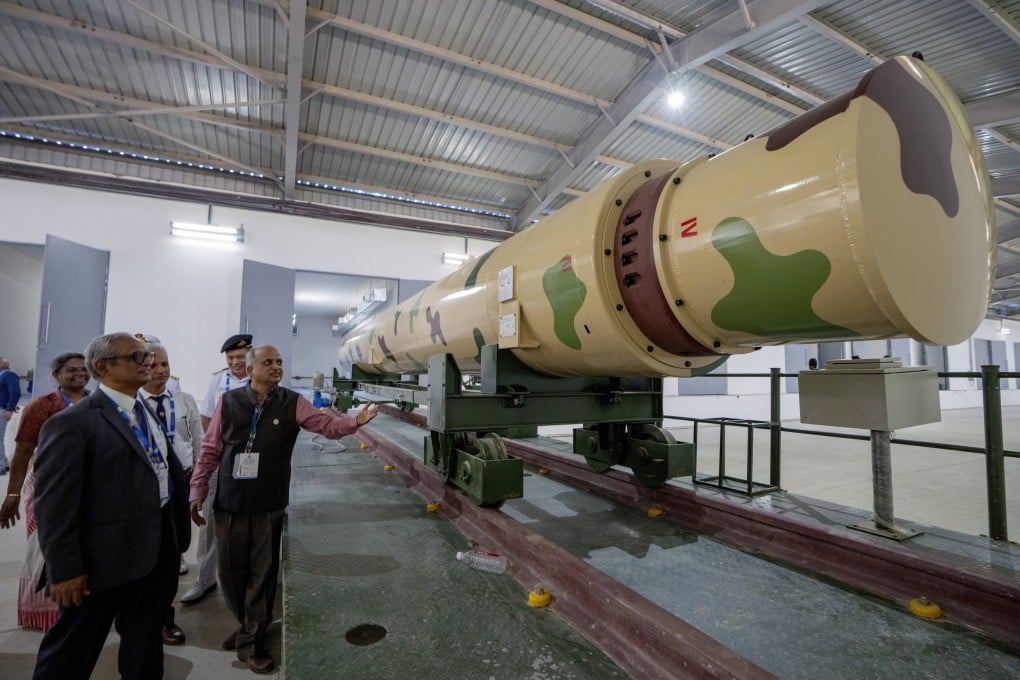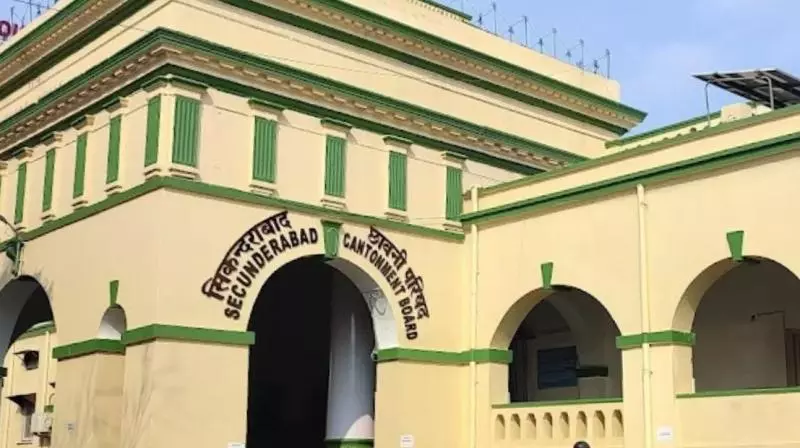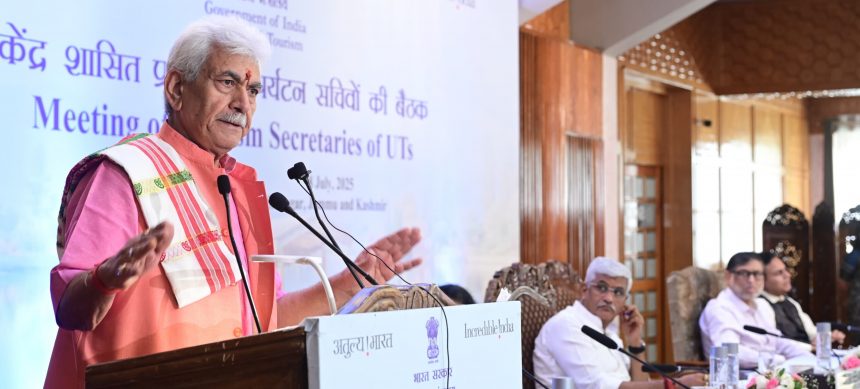SOURCE: IDRW.ORG

In a significant development in India’s defense procurement landscape, officials from Lockheed Martin, the U.S. Department of Defense (DoD), and the Pentagon have deferred their planned visit to India, originally scheduled for July 2025.
According to Sources close to Indian Defence Research Wing (idrw.org), the visit was intended to mark the first official proposal to supply India with Lockheed Martin’s fifth-generation F-35 Lightning II jets, specifically the F-35A variant, for the Indian Air Force (IAF). The reasons for the deferment remain unclear, with speculation ranging from scheduling conflicts to a potential indefinite postponement. This development comes amid heightened competition, as Russia pushes for India to procure its Su-57 stealth fighter in a government-to-government (G2G) deal.
Continue readingSOURCE: IDRW.ORG

An intelligence official, speaking to the Indian Defence Research Wing (idrw.org), has disclosed that the Pakistani military deployed a dedicated cyber team to monitor Indian social media handles, particularly on platform X, to track Indian Air Force (IAF) jet movements during the recent India-Pakistan conflict dubbed Operation Sindoor (May 7–10, 2025).
The operation, launched in response to the Pakistan-sponsored Pahalgam terror attack that killed 26 tourists, saw intense military and digital warfare, with Pakistan’s cyber efforts aimed at gathering real-time intelligence on IAF operations. However, the official noted that while some Indian social media posts inadvertently aided Pakistan, the flood of disinformation from Indian accounts also created significant confusion in the Pakistani military’s decision-making process.
Continue readingSOURCE: AFI

DK Sunil, Chairman and Managing Director of Hindustan Aeronautics Limited (HAL), has stated that maintaining two competing players in India’s fighter jet manufacturing sector is not viable given the modest production volumes projected over the next 15 years. Speaking at a defense industry conclave, Sunil argued that the Indian Air Force’s (IAF) planned induction of 420 fighter jets, averaging 28–30 aircraft per year, does not justify the establishment of a second manufacturer alongside HAL, emphasizing the need for a consolidated approach to optimize resources and ensure economic viability.
The IAF’s roadmap includes seven squadrons (126 units) of the Advanced Medium Combat Aircraft (AMCA), a fifth-generation stealth fighter, and 120 units of the Tejas Mark 2, a 4.5-generation multirole fighter, alongside 180 Tejas Mark 1A aircraft already on order. This totals 420 jets over the next 15 years, a scale Sunil described as insufficient to support two separate manufacturing entities. “The logic of having two competing players in fighter jet manufacturing doesn’t hold when the volumes are modest,” he said, highlighting that an annual production rate of 28–30 jets lacks the scale required for dual manufacturers to operate efficiently.
Continue readingSOURCE: AFI
Iranian analysts and former officials have expressed growing frustration with Russia, accusing Moscow of failing to deliver promised Sukhoi Su-35 fighter jets that could have bolstered Iran’s air force, which was recently decimated by Israeli airstrikes. The criticism highlights a perceived betrayal, as Russia has reportedly prioritized military cooperation with India, a U.S. ally, over Iran, despite Tehran’s significant support to Moscow in recent years.
According to posts on X, Seyed Hossein Mousavian, a former Iranian diplomat and nuclear negotiator, emphasized that Russia did not provide Iran with Su-35 jets or S-400 air defense systems, despite decades of threats from nuclear powers like the U.S. and Israel. He contrasted this with Russia’s offer to India of 117 Su-35M fighter jets and joint production of the advanced Su-57 with full technology transfer. “Iran feels betrayed after Russia offered Su-57 and Su-35 jets to India—while refusing to give even Su-35s to Tehran, despite Iran supplying over 1,700 Shahed-136 drones to Moscow,” one X post stated, reflecting the sentiment of betrayal among Iranian commentators.
Continue readingSOURCE: AFI

Defence Secretary RK Singh has confirmed that India is moving forward with plans to procure US-made Javelin anti-tank guided missiles (ATGMs) through a combination of emergency procurement routes and long-term negotiations. The announcement underscores India’s urgency to enhance its anti-tank warfare capabilities amid evolving regional security challenges, particularly along its northern and western borders with China and Pakistan.
The Javelin, developed by Raytheon and Lockheed Martin, is a third-generation, fire-and-forget, shoulder-fired missile system renowned for its precision and effectiveness against modern armored vehicles. With a range of 2.5–4 km, a top-attack profile, and infrared guidance, the Javelin has proven its combat effectiveness in conflicts like Iraq, Afghanistan, and Ukraine, where it earned the nickname “Saint Javelin” for its role in neutralizing Russian armor. The system’s lightweight design (11.8 kg) and reusable Command Launch Unit (CLU) with GPS and infrared zoom capabilities make it ideal for infantry and special forces operating in diverse terrains.
Continue readingSOURCE: AFI

India has achieved a significant milestone in its defense capabilities by reducing the production turnaround time for missiles from 10–12 years to just 2–3 years, according to Dr. G Satheesh Reddy, president of the Aeronautical Society of India and former Secretary of the Department of Defence Research and Development and Chairman of the Defence Research and Development Organisation (DRDO). Speaking to the Times of India, Dr. Reddy hailed this advancement as a “huge leap in technology,” positioning India on par with developed nations like the United States, Russia, and China, despite these countries being one to two decades ahead in missile development.
“This reduction in development timelines reflects India’s growing expertise in missile technology and our commitment to self-reliance,” Dr. Reddy said. The accelerated production cycle has been driven by advancements in design, simulation, testing, and manufacturing processes, bolstered by increased collaboration with private industry and academia. The achievement underscores the success of DRDO’s efforts under the “Atmanirbhar Bharat” initiative to build a robust indigenous defense ecosystem.
Continue readingSOURCE: AFI

Defence Secretary RK Singh has announced that India is set to significantly strengthen its defense capabilities through a substantial order for indigenous drones, emphasizing the country’s commitment to self-reliance under the Buy Indian-Indigenously Designed, Developed, and Manufactured (IDDM) route. Speaking at a media briefing, Singh described the upcoming drone procurement as “large enough” to sustain the domestic defense industry without requiring additional fiscal support, signaling a transformative push for India’s unmanned systems ecosystem.
“The size of the order for defense drones will be large enough, and industry will need no other fiscal support,” Singh stated, highlighting the Ministry of Defence’s (MoD) confidence in India’s growing drone manufacturing capabilities. The order will encompass a range of unmanned aerial vehicles (UAVs), including combat drones, swarm drones, and surveillance platforms, aimed at enhancing the Indian Armed Forces’ operational effectiveness across diverse scenarios, from border security to maritime surveillance.
Continue readingSOURCE: IANS

A team of top aviation engineers from the US and the UK are busy working to rectify the error that has left the British F-35B Lightning II fighter jet grounded at the international airport here since June 14.
It was on Sunday that the team from the UK and another team from Lockheed Martin — the American manufacturer of the F-35 — arrived here. The first task they accomplished was to move the stranded jet, which was lying in the open on one side of the airport terminal, to the hangar.
Continue readingSOURCE: IANS

Calling out Pakistan’s malicious campaign, the Ministry of Information and Broadcasting on Tuesday issued a Fact Check report on a ‘fake’ letter circulated on social media over the purported recall of an Indian defence official from the Embassy in Jakarta.
“A #fake letter falsely attributed to the Ministry of Home Affairs, claiming the recall of Captain (Indian Navy) Shiv Kumar, Defence Attache at the Indian Embassy in Jakarta, is circulating on social media,” said a statement issued by the Press Information Bureau (PIB).
Continue readingSOURCE: UNI

Recognising the significance of joint operations in future warfare, the chiefs of the Army, Navy, and Indian Air Force today addressed senior military officers on the preparedness and critical elements of such coordinated missions. For the first time since Operation Sindoor, Army Chief General Upendra Dwivedi, Navy Chief Admiral Dinesh Kumar Tripathi, and Air Force Chief Air Chief Marshal AP Singh addressed senior military officers in a high-level meeting from all three services from a single platform.
The senior leadership reaffirmed their collective commitment to strengthening synergy among the Army, Navy, and Air Force, with a strategic focus on integrated operational planning.
Continue readingSOURCE: UNI

In a significant boost to infrastructure in the Secunderabad Cantonment area, Defence Minister Rajnath Singh has approved the utilisation of Rs 303.62 crore for various development works, following the efforts of Union Coal and Mines Minister G Kishan Reddy. This funding is linked to the proposed transfer of cantonment lands to the Hyderabad Metropolitan Development Authority (HMDA) to facilitate the construction of elevated corridors in the region. In an important departure from the usual procedure, the land transfer compensation—provided by the Telangana state government—will not go into the Consolidated Fund of India.
Instead, it will be deposited into a newly established escrow account attached to the Secunderabad Cantonment Board. This ensures that the funds will be used exclusively for local development works within the cantonment area. Union Minister Kishan Reddy had written twice to Defence Minister Rajnath Singh, requesting that the compensation be used specifically for local infrastructure.
Continue readingSOURCE: PTI

Jammu and Kashmir Lieutenant Governor Manoj Sinha said on Tuesday that ordinary citizens were taking a stand against Pakistan-backed terrorism through street protests which was a good sign for establishing peace in the Valley.
Stressing that the development of the tourism sector is possible only in a peaceful and secure environment, he said the people of Jammu and Kashmir should ensure that terrorists’ attempts to draw sustenance from society are foiled.
Continue readingSOURCE: PTI

Shillong-based Eastern Air Command chief Air Marshal Surat Singh called on Arunachal Pradesh Governor Lt Gen (Retd) K T Parnaik at Raj Bhavan and held discussions on key strategic and developmental issues.
According to an official statement issued on Tuesday, the two dignitaries had on Monday deliberated on matters related to national security, regional defence preparedness, and effective disaster management, particularly in light of Arunachal Pradesh’s difficult terrain and increased vulnerability during the monsoon season.
Continue readingSOURCE: PTI

Four youths were arrested in Uttar Pradesh’s Deoria district for allegedly wearing T-shirts with the Palestinian flag during a Tazia procession, police said on Tuesday. The incident took place on Sunday in the Baghauchghat police station area when a purported photo of the procession went viral on social media, showing a group of youths wearing T-shirts with symbolic representations of the Palestinian flag.
Police detained the youths and seized the T-shirts. According to Circle Officer Sanjay Kumar Reddy, a preliminary investigation revealed that the accused belong to the Baghauchghat police station area.
Continue readingSOURCE: IANS

Bomb threats at City Civil Courts, Raj Bhavan, and a couple of other places in Hyderabad created a scare on Tuesday, prompting police to launch a thorough search of the premises. Police went on alert after an email threatened bomb blasts at the City Civil Court in the old city, the Raj Bhavan, the Gymkhana Club, and the Secunderabad Civil Court.
The email reportedly received at the City Civil Court in the old city threatened that RDX-based improvised explosive devices (IEDs) were planted at these places.
Continue reading